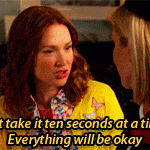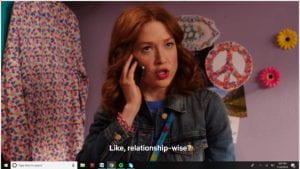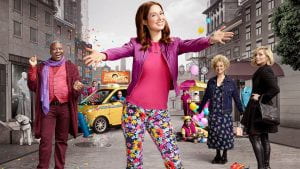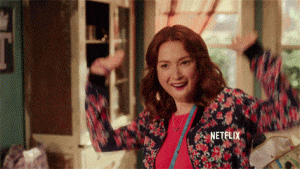Barr, Johanna. “Look Who’s Still Talking the Most in Movies: White Men.” The New York Times, 4 Aug. 2017, https://www.nytimes.com/2017/08/04/arts/diversity-films-women-race.html. Accessed 20 Sept 2018.
The article shows that despite more high profile movies with women as major characters, representation for women and minorities as main characters outside traditional or stereotyped roles is limited. Studies show that even including film scripts with women as major characters male characters spoke in far larger quantities in comparison to women. In addition, dialogue for women tended to be more emotional and more centered on family values. Stereotypes for minorities were also present in film scripts. For example, there were more swear words in scripts for black characters. At the end of the article, the author urges audiences to not be fooled by higher profile cases like Wonder Woman and Girls Night and see that the larger trend has stayed stagnant for many groups. Although not directly related to television, the article highlights gender and minority representation disparities despite rising high profile representation. I thought it was a good point that she brought up about not being misled by one or two high profile productions that go against the norm and thinking that the long stagnant industry is changing.
Chira, Susan. “A New Rating for TV and Movies Tries to Combat Gender Stereotypes.” The New York Times, 20 June. 2017, https://www.nytimes.com/2017/06/20/arts/common-sense-media-ratings-gender.html. Accessed 19 Sept 2018.
The author describes a new rating system made by Common Sense Media to access gender representation in television and media. Common Sense Media evaluated television and movies on a spectrum evaluating whether the media defies gender stereotypes – showing women in STEM fields like Temperance Brennan in Bones or in unconventional roles like Gal Gadot’s Diana in Wonder Woman. The new system by Common Sense Media is focused more on the roles that the women play not necessarily the numbers of gender representation. For example, Bridesmaids was not labeled as “positive gender representation” despite its positive impact on the media industry for women. This article is important because it provides information about a rating system that looks to reward positive gender representations, in some ways a more developed Bechdel test. This rating system could be used our research to evaluate television shows. It also highlights a growing demand for shows combating gender stereotypes.
Collins, Rebecca L. “Content Analysis of Gender Roles in Media: Where are we Now and Where should we Go?” Sex Roles, vol. 64, no. 3-4, 2011, pp. 290-298. ProQuest, http://prx.library.gatech.edu/login?url=https://search.proquest.com/docview/850508348?accountid=11107, doi:http://dx.doi.org/10.1007/s11199-010-9929-5.
Collins talks about quantitative research done on gender roles in media. She finds that an there is an overwhelming amount of research done that shows that women are underrepresented in all forms of media and when they are, they are hypersexualized or are portrayed as sexual objects. Women in all forms are usually underrepresented as well. For example, women who are not thin and older are even more underrepresented than the cohort as a whole. Collins also highlights how broader gender stereotypes are in effect across all media. Women are pushed into gender stereotyped roles in media, portraying the housewife or traditionally female jobs like the secretary. In addition, Collins also considers the effects of media on society’s perception; she brings up the Don’t Ask Don’t Tell rule, where media conversation focused significantly more on gay men rather than lesbian women, even though the number of both groups in the army were relatively the same. This article is important because it shows how gender representation in media can have an affect on public perception of subjects, even policy issues. It also further highlights the underrepresentation of a diverse group of women in non-stereotyped roles.
Pasztor, Sabrina K. “The Gendered World of Work in TV Programming and the Media Industry.” Media Report to Women, vol. 43, no. 1, 2015, pp. 12-20. ProQuest, http://prx.library.gatech.edu/login?url=https://search.proquest.com/docview/1661077194?accountid=11107.
In the article, Pasztor analyzes the portrayal of women in television over time. The 1960s showed mostly upper to middle class white women in the domestic sphere, and any representation of the “working woman” was usually single and looking to get married. The 70s showed a response to the second wave of feminism, but women in working roles tended to be hipersexualized. 80s television represented women in the workforce but usually in low level positions. The 90s responded to 3rd wave feminism with intersectionality and “liberated” females across all spectrums. Across all decades there was slight increase in gender representations but mostly focused on young women. Pasztor then goes on to show that representation behind the scenes influence representation on screen. This article is valuable in that it highlights how representation of women in the workforce has changed over time due to external factors in society and how television can also affect society. One important point that Pasztor bring up is the lack of representation for older women outside of their twenties in television.
Scovell, Nell. “The ‘Golden Age for Women in TV’ Is Actually a Rerun.”The New York Times, 12 Sept. 2015, https://www.nytimes.com/2015/09/13/opinion/sunday/the-golden-age-for-women-in-tv-is-actually-a-rerun.html. Accessed 20 Sept 2018.
In this article, Scovell talks about how people perceive this era to be the “Golden Age for Women in TV.” Scovell combats this with the period in 1990 with shows like Murphy Brown and Golden Girls. Scovell proclaims that this is an era that has returned – the prominence of popular, award winning tv shows that seem to turn the tide on unbalanced gender representation. The article is important because it highlights and supplements other articles that talk about high profile productions led by women that go against traditional gender representations. It suggests that the gender imbalance on TV is more of a circuitous route that will not be changed without a persistent fight. The article shows that modern television is not unique in its television portrayal of women and that the gender imbalance is a continuous struggle that is not being very well addressed in the past decade since the last “Golden Age” for women in media.
Smith, Brittany. Gender Representation and Occupational Portrayals in Primetime Television, University of Arkansas, Ann Arbor, 2016. ProQuest, http://prx.library.gatech.edu/login?url=https://search.proquest.com/docview/1822219320?accountid=11107.
Smith cities studies on primetime shows airing on ABC, CBS, NBC, Fox and The CW, focusing on gender representation and the portrayal of both genders and how it blends in with social cognitive theory. Smith also references research that shows that portrayals of gender roles on television can influence and skew the perceptions of women and men on viewers of television. Findings show that women are likely to not play major characters, and if they do, they stay out of professional jobs and are most likely not married. There is always a tradeoff in between marriage and family and jobs in gender portrayal. In all her studies, the CW had the smallest difference in gender representation, then NBC, then Fox, then ABC, and then CBS. ABC had the highest females in professional jobs, and CBS had the highest in blue collar. Her research shows that older tv networks have more women in professional jobs. This article is very important because it discusses the impact of tv networks on gender representation and portrayal, something that could be looked at in our own respective research projects. In addition, Smith highlights blue collar vs professional jobs in representation as well as marriage as a factor that affects such roles. It also bring to light how and why representation affects society.











